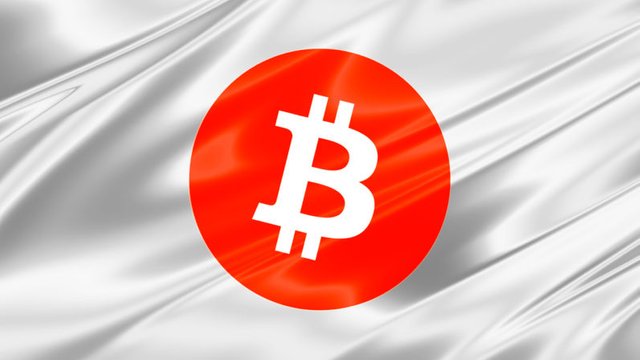Japan plans to manufacture ASIC chips with 7 nano technology to bring bitcoin mining to a whole new level
Arabs bit - the site said BitcoinNews.com this week that a group of Japanese GMO announces plans to start mining operation bitcoin using semiconductor chips technology 7 nm. Where many of the metal bitcoin were looking forward to this news, because 7nm chips are not being produced commercially at the moment. However, many people still believe that the introduction of the more advanced ASIC-specific integrated circuit processors will make a complete change in the bitcoin mining industry.
Japanese GMO chips with 7nm technology and transformation in the process of mining the bitcoin
The Japanese Internet company GMO Group announced last week plans to join the mining industry. Where one of the highlights of the company's data revealed that the new mining process would benefit from "the latest chips with 7nm technology for mining." The company also made some details, saying they had an "alliance partner" as well as a semiconductor design company. Currently, 7nm semiconductor chips are not produced commercially, but many companies have announced plans to produce these chips in the very near future. There is also a good chance that 10nm and 7nm products will be widely produced in the first quarter of 2018. Companies such as Samsung, Intel, TSMC and Globalfoundries are all moving towards the goal of producing 7nm chips during their mass production.
Chips smaller and more efficient is something good for decentralization
Rumors circulated throughout the community throughout 2015 and 2016 that 14nm-10nm chips were used in the bitcoin mining, but it seemed that these chips did not actually exist. In October 2015, Bi Wang announced the production of 14nm chips and claimed to have sold the first installment very quickly, but the auction was canceled for sale at the time. If only a few organizations produce the most efficient mining chips, many people believe that the ecosystem of the bitcoin mining can be further decentralized. Andreas Antonopoulos, the star in the world of bitcoin, explained how this would happen at the D10e conference in San Francisco in the summer of 2016. He said:
"The 14nm chip is very good for decentralization. What you're going to do is extend the lifespan of mining equipment from 2-3 months of usable life cycle to nearly two years, which would capture the arena among all the participants in the system. "
On the other hand, the 7nm chip will not only transform the bitcoin mining sector, but will actually revolutionize the entire computer industry with a fourfold increase in efficiency. The 7nm semiconductor chips are very small but contain more than 20 billion transistors that enable many devices to perform more complex calculations. This would give the mining company the opportunity to partner with a company like Samsung that invests billions in manufacturing 10nm and 7nm chips. In fact, the company has formed an alliance with IBM and Globalfoundries to research and develop 7nm chips, so the partnership order will be common.
With optimal solutions increasing , is centralization still an obstacle?
The monopolies of mining assemblies, microchips, and topics such as ASIC patents have led to much debate on the centrality of mining over the past two years. The mineralists, formerly considered protectors of the bitcoin network, are now monopolistic entities. Over the past few months, with the intensification of the debate on scaling up, the centrality of mining has been considered undesirable, and this situation has evolved into talks to change the system of proof of action in the bitcoin network. However, the Ledger Journal this month published a paper by Nicola Dimitri explaining that the fear of centralized mining is misleading. The paper also discussed the analysis of mining game theory, and other topics such as whether 51% of the attacks pose a real threat. Dimitri also gave more details about the bitcoin mining, saying:
"[bitcoin] mining activities seem to be essentially a monopoly, meaning that if there are only two active minerals, their profits will always be positive regardless of the marginal cost of the deduction. For this reason, neither can exclude the other by reducing its own costs if activities other than mining in the bitcoin do not have a higher rate of return. "
7 Nano chips closest to Moore's Law " Moore "
It would be interesting for GMO to manage 7nm chip production in their mining machines, where these semiconductor chips would be much smaller, and more efficient than the 16nm versions that are mostly used for the time being. The company also states that it will manufacture 7nm chips for resale as well, which will bring new generation of mining chips to the general public and rival mining communities.
If the Japanese company keeps these chips secret, with the mining industry currently using 16nm chips, GMO owners of the new chip will survey competition in this area fully, because it will work on a different technology. Moreover, the 7nm chip is approaching the maximum possible limit of Moore's law, which makes it very difficult to produce a 5nm structure, so the semiconductors will be reduced to a smaller design so that it is difficult to obtain.
source :- arabbit


This post recieved an upvote from minnowpond. If you would like to recieve upvotes from minnowpond on all your posts, simply FOLLOW @minnowpond
Do not let spacious plans for a new world divert your energies from saving what is left of the old.
- Winston Churchill